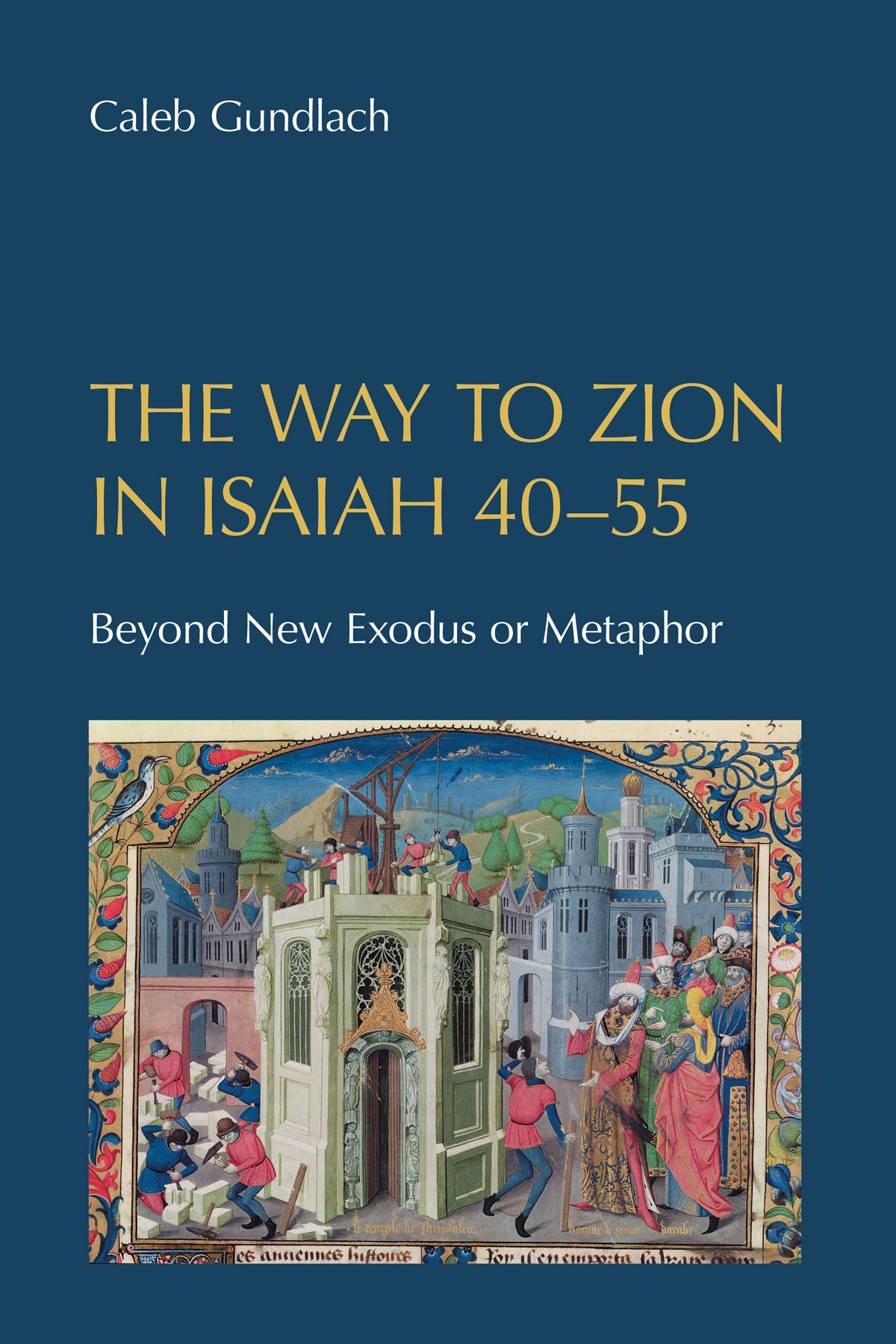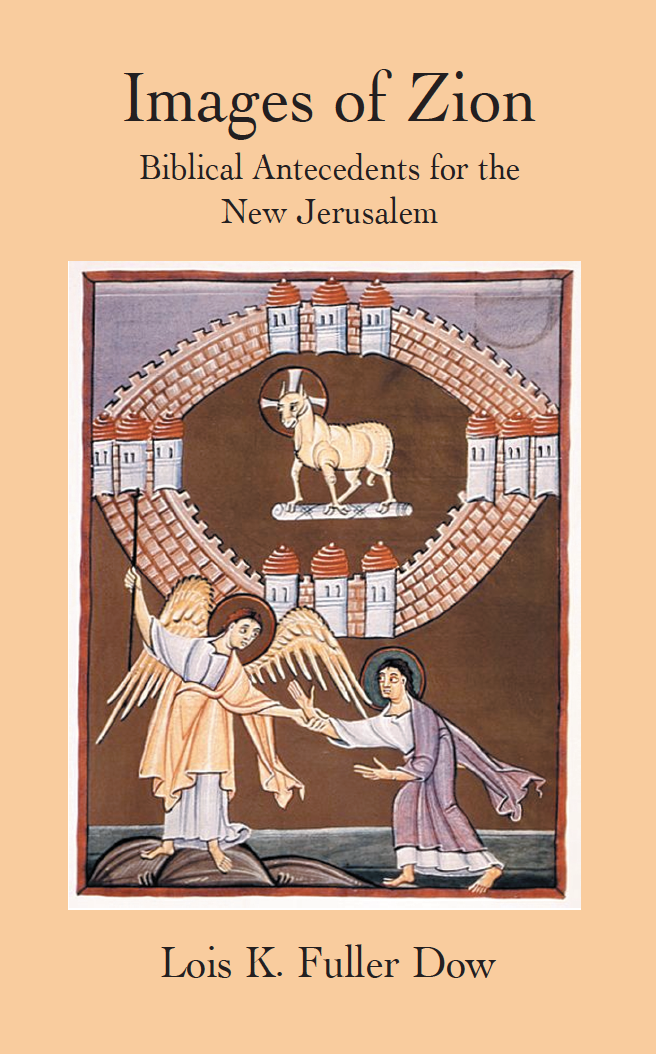The Way to Zion in Isaiah 40-55: Beyond New Exodus or Metaphor
Published: Jun 2023
£70.00
Entering into a longstanding debate in Isaiah research on 'way' language in chapters 40–55 comes The Way to Zion in Isaiah 40–55. This discussion concerns whether the 'way' is best understood as a new exodus of the exiles from Babylon or instead as a metaphor signifying the transformation of Jerusalem from a place of judgement to a place of redemption.
Caleb Gundlach’s study contributes to this debate by arguing that the pilgrimage to Zion becomes a prevalent aspect of the 'way' theme in Isaiah 40–55 and influences how the homecoming is envisioned in these chapters. Firstly, it lays out criteria for recognizing the pilgrimage to Zion as the predominant journey type in Isaiah 49–55. It then explores the relationship of this pilgrimage journey to the major theme of Zion’s restoration within Isaiah 40–55, a theme also emphasized by metaphorical interpretations of the 'way'.
Resituating the homecoming material within the perspective of pilgrimage to Zion sheds light on other interpretive debates on Isaiah 40–55, including:
- the Babylonian or Judahite provenance for the text;
- emphasis on either the text’s compositional stages or its thematic coherence;
- thematic tensions, such as between Zion’s restoration and the Servant’s mission to the nations.
Reconsidering Isaiah’s 'way' imagery under the paradigm of the pilgrimage to Zion provides new avenues for negotiating these issues and takes a further step towards understanding how Isaiah 40–55 coheres as a meaningful and complex unity.
The Way to Zion in Isaiah 40-55: Beyond New Exodus or Metaphor
£70.00
Entering into a longstanding debate in Isaiah research on 'way' language in chapters 40–55 comes The Way to Zion in Isaiah 40–55. This discussion concerns whether the 'way' is best understood as a new exodus of the exiles from Babylon or instead as a metaphor signifying the transformation of Jerusalem from a place of judgement to a place of redemption.
Caleb Gundlach’s study contributes to this debate by arguing that the pilgrimage to Zion becomes a prevalent aspect of the 'way' theme in Isaiah 40–55 and influences how the homecoming is envisioned in these chapters. Firstly, it lays out criteria for recognizing the pilgrimage to Zion as the predominant journey type in Isaiah 49–55. It then explores the relationship of this pilgrimage journey to the major theme of Zion’s restoration within Isaiah 40–55, a theme also emphasized by metaphorical interpretations of the 'way'.
Resituating the homecoming material within the perspective of pilgrimage to Zion sheds light on other interpretive debates on Isaiah 40–55, including:
- the Babylonian or Judahite provenance for the text;
- emphasis on either the text’s compositional stages or its thematic coherence;
- thematic tensions, such as between Zion’s restoration and the Servant’s mission to the nations.
Reconsidering Isaiah’s 'way' imagery under the paradigm of the pilgrimage to Zion provides new avenues for negotiating these issues and takes a further step towards understanding how Isaiah 40–55 coheres as a meaningful and complex unity.
Images of Zion: Biblical Antecedents for the New Jerusalem
Published: Apr 2010
£60.00
This study, unparalleled in recent scholarly writing, sets out to examine the broad sweep of the biblical theological tradition about Jerusalem/Zion as the antecedent to Revelation's depiction of the New Jerusalem.
In the Old Testament, Jerusalem/Zion is depicted in both its ideal form and its actual manifestation. In the Psalms (and seminally in the Pentateuch), Zion is depicted as similar to the holy mountains of the gods in Ugaritic religion. But it is not only a dwelling-place of the deity: it is also an earthly city inhabited by humans, and so it becomes a place of community of the divine and the human. The historical books of course make no secret of the realities of life in the far from holy Jerusalem, and, in the prophets also, the city of Jerusalem is the site of wrongdoing and corruption, a place attracting judgment; but equally it is the focus for eschatological anticipations of a renewed community that does fulfil the ideal.
In the New Testament, by its rejection of the Messiah earthly Jerusalem forfeits its role as the true Jerusalem/Zion, which is taken over by Jesus and the church. Occasionally we get glimpses of the belief that the true Jerusalem is in heaven (a development begun in Second Temple literature). The book of Revelation picks up as well from Second Temple literature the theme of the identity of Jerusalem with the Garden of Eden, combining this idea with renewal-of-Zion passages from the prophets to depict the final state of God's people as a place of blessedness, community, life and safety, as well of intimacy with God.
Images of Zion: Biblical Antecedents for the New Jerusalem
£60.00
This study, unparalleled in recent scholarly writing, sets out to examine the broad sweep of the biblical theological tradition about Jerusalem/Zion as the antecedent to Revelation's depiction of the New Jerusalem.
In the Old Testament, Jerusalem/Zion is depicted in both its ideal form and its actual manifestation. In the Psalms (and seminally in the Pentateuch), Zion is depicted as similar to the holy mountains of the gods in Ugaritic religion. But it is not only a dwelling-place of the deity: it is also an earthly city inhabited by humans, and so it becomes a place of community of the divine and the human. The historical books of course make no secret of the realities of life in the far from holy Jerusalem, and, in the prophets also, the city of Jerusalem is the site of wrongdoing and corruption, a place attracting judgment; but equally it is the focus for eschatological anticipations of a renewed community that does fulfil the ideal.
In the New Testament, by its rejection of the Messiah earthly Jerusalem forfeits its role as the true Jerusalem/Zion, which is taken over by Jesus and the church. Occasionally we get glimpses of the belief that the true Jerusalem is in heaven (a development begun in Second Temple literature). The book of Revelation picks up as well from Second Temple literature the theme of the identity of Jerusalem with the Garden of Eden, combining this idea with renewal-of-Zion passages from the prophets to depict the final state of God's people as a place of blessedness, community, life and safety, as well of intimacy with God.


